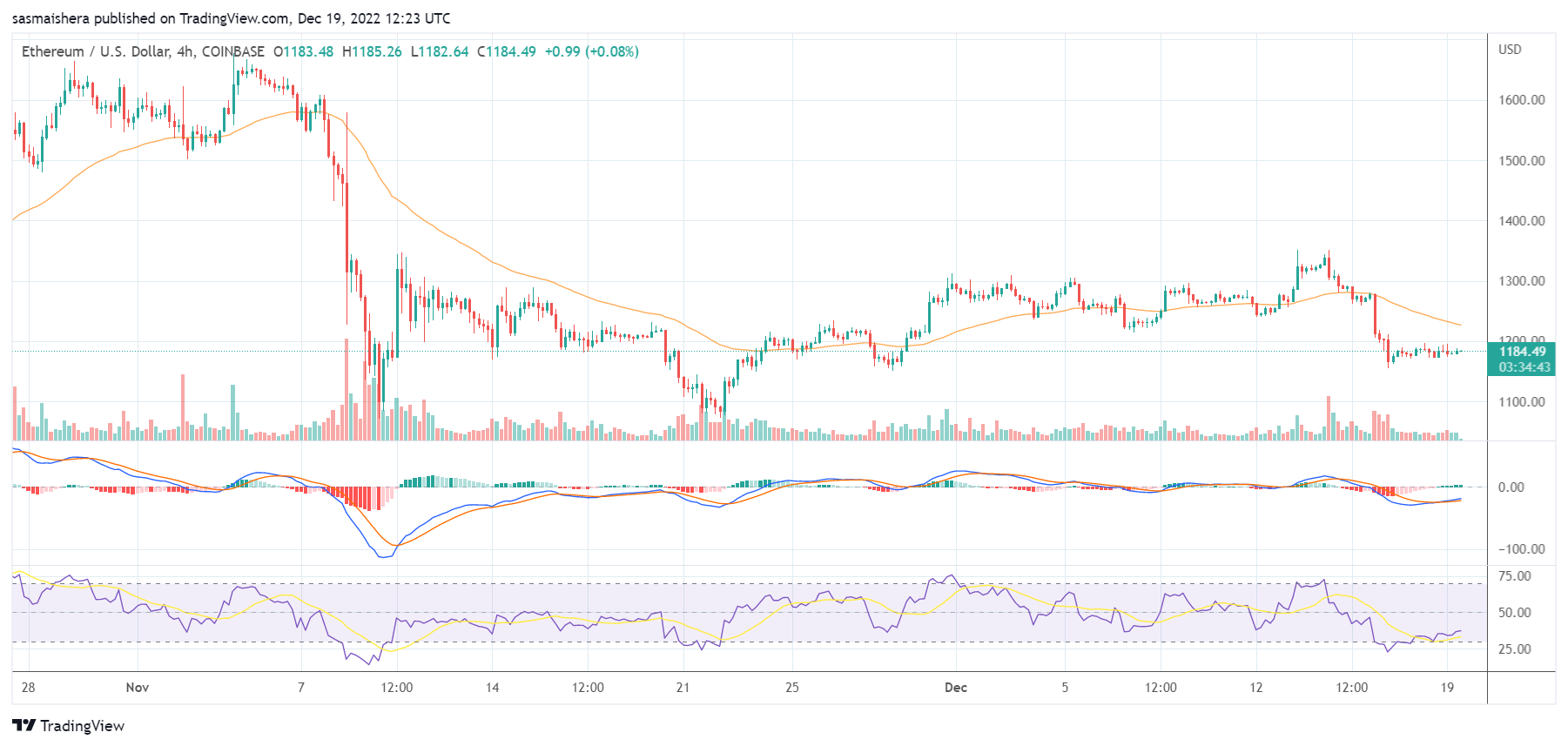Staking is great. It offers you a way to earn some extra tokens by simply HODLing your coins like you were already doing. But what’s the point in earning some tasty interest if the value of your staked coins drops to $0?
This article outlines the eight of the best staking cryptos to buy that strike a great balance between decent rewards and long-term fundamentals.
1. Metacade (MCADE) – The Best Staking Crypto to Buy
Metacade is a community hub built for the future of Web3 and Play2Earn gaming. It aims to be the number one platform for connecting with like-minded gamers, discovering the latest Play2Earn games, and earning more from GameFi. In the Metacade, you’ll find chat rooms, leaderboards, reviews, and the hottest alpha from industry experts that can help you get ahead in the world of Play2Earn gaming.
Metacade is more than just a platform for hanging out and playing the latest games, however. It’s a place where you can take advantage of several earning opportunities, gain an edge in GameFi, and even participate in the development of groundbreaking Play2Earn titles.
Whenever you post a review, offer up some tips, or produce other useful content for the Metacade community, you’re rewarded with the MCADE token. There are also regular prize draws and tournaments where you’ll go head-to-head against other community members for your chance to win a big cash prize! If you’re a gamer who loves to play the latest titles before everyone else, then you’ll also be able to earn as a tester for Metacade’s developer community by using the platform’s native testing environment to offer direct feedback on games in development.
Staking your MCADE tokens means you can win rewards from the project, which are paid in stablecoins to avoid inflating the number of MCADE tokens in circulation. Even if you’re not one for staking, you can still use your MCADE tokens to vote on the direction of the project.
MCADE holders can vote on game proposals to decide which games are developed next on the platform. The game developer whose proposal achieves the most votes will be awarded a Metagrant, a source of funding, to support the development of the game. Once the title is ready for launch, Metacade will add it to its virtual arcade for everyone to enjoy. Eventually, Metacade plans to host dozens of the very best Play2Earn games in its arcade, as voted for and backed by the community.
With all of these incredible features in mind, Metacade is set to dominate the budding GameFi industry by offering a buzzing community space at the forefront of the gaming revolution. Combined with attractive staking rewards and plenty of utility for MCADE holders, it’s the top pick as the best staking crypto to buy.
>>> You can participate in the Metacade presale here <<<
2. Polkadot (DOT)
Polkadot is a solution to the issue of interoperability across different blockchains. It effectively allows two separate chains, like Ethereum and Solana, for example, to communicate with one another and uses parachains (parallel blockchains) to ensure fast and scalable transaction speeds. Its native token, DOT, is used as a governance token and to validate transactions using the proof-of-stake (PoS) consensus mechanism.
As such, DOT can be staked to realise rewards. By running a validator node, you’ll achieve 14.9% returns per year, but you’ll also need to lock up 350 DOT, or around $1800 in late November 2022. Alternatively, you can become a delegator, which returns 13.98% per year and requires locking up 80 DOT (approx. $415). The best way to stake DOT is on Binance, which returns 20.98% APR over a 120-day lockup with a limit of 20 DOT available to be staked.
Considering DOT’s status as the 11th most valuable cryptocurrency by market cap and the unique solution the Polkadot network offers, it’s the second best staking crypto to buy.
3. Cosmos (ATOM)
Cosmos is a chain similar to Polkadot. It’s an interoperability solution that aims to create an “internet of blockchains” by allowing users to develop custom-built blockchains that can communicate with one another. This allows them to share data and perform transactions quickly and cheaply using the ATOM token. Like Polkadot, Cosmos uses a PoS consensus, meaning that holders of ATOM can stake their tokens.
Cosmos offers the highest rewards out of the top thirty tokens by market cap, with delegators earning 19.03% APR with no minimum lockup amount. You can boost these earnings on Binance, which offers 32.9% APR when you stake up to 5 ATOM tokens for 120 days.
When accounting for its status in the interoperability space and as a token that’s performed exceptionally well during the recent bear market, ATOM’s rewards are some of the best on the market. For that reason, it’s the third best staking crypto to buy.
4. Ethereum (ETH)
The world’s most valuable smart contract platform, Ethereum, recently upgraded its network to run on proof-of-stake, as opposed to its former proof-of-work (PoW) consensus mechanism. The upgrade was carried out to improve scalability, security, and environmental output, with the PoS system promising to drastically boost transaction speeds and reduce fees. This system enables holders of ETH to now stake their tokens and validate transactions on the network instead of setting up a costly mining rig.
At the time of writing, you can earn 6.24% a year by running an Ethereum validator node or 5.11% using a staking pool. However, you will need 32 ETH to stake with either of these methods, which is around $35,400 at today’s price of $1100. You can stake on Binance at up to 5.2% APR with no minimum amount, but you will need to lock up your tokens for at least six months until Ethereum’s Shanghai upgrade is complete.
It’s still one of the most stable and promising tokens on this list despite these high requirements, so it’s the fourth best staking crypto to buy.
5. Solana (SOL)
Solana is a smart contract platform that was developed to address the issues of scalability and speed that affected the Ethereum network at the time. Solana offers blazing-fast speeds of around 3500 transactions per second (TPS) compared to Ethereum’s ~30 TPS (ethtps.info), with a theoretical maximum of 710,000 TPS on a standard gigabit network, according to Solana’s documentation. This still beats the expected maximum after the Ethereum upgrade, which should stand at around 100,000 TPS.
Solana offers 7.79% APR as a validator, with just 1 SOL (~$11 today) needed to operate a node, with a minimum lockup of five days. Becoming a delegator is easier and offers 7.04% APR, with the same minimum lockup amount and period as a validator. However, probably the easiest and best way to stake your SOL is through Binance, which offers 16.9% APR when staking up to 5 SOL for 120 days.
With low barriers to entry, competitive staking rewards, and a valuable use case, Solana is the fifth choice as one of the best staking cryptos to buy.
6. Binance Coin (BNB)
Binance Coin is the native token of the Binance exchange. It was initially used as a trading discount fee token, but has since progressed to power the Binance Smart Chain (BSC), a smart contract platform that is used as an alternative to Ethereum. Since its launch in 2020, BSC has grown to become one of largest smart contract platforms in the crypto market, powering over 4,300 decentralised apps (dApps), according to DappRadar.
While running a validator node is out of the picture unless you have $3 million lying around, you can become a BNB delegator by locking up 1 BNB, or around $250 in November 2022. This will return you 4.09% yearly with a minimum lockup period of just seven days. On the Binance platform, you can stake up to 0.5 BNB for 120 days to earn 6.2% APR.
Given that BNB has remained as one of the most valuable cryptocurrencies and is likely to outperform in the coming bull market, it’s the sixth best staking crypto to buy.
7. NEAR Protocol (NEAR)
NEAR is a smart contract protocol that uses sharding to produce incredibly fast transaction speeds at virtually no cost. It uses sharding (breaking data into more manageable pieces) to achieve this, creating a much more efficient and scalable smart contract solution. NEAR Protocol is what’s known as a layer 1 solution, meaning that it’s built for other developers to build from the foundation it provides. Once development is complete, NEAR is expected to be able to handle up to 100,000 TPS – a potent rival to Ethereum and Solana.
Like Ethereum and Solana, NEAR uses PoS. However, NEAR offers much better staking rewards than either of these tokens, returning 10.05% per year as a delegator with a one-day minimum lockup period. You can become a validator to realise a 10.83% APR, but it’s much easier to become a delegator. Binance offers the best staking rewards out of all major crypto exchanges, returning 30.49% APR with a maximum staking allowance of 20 NEAR.
While its use might not be as widespread as other layer 1 solutions, NEAR is a serious contender in this space and could soon creep into the top ten most valuable projects. Factoring in its excellent staking rewards, NEAR Protocol is a great choice as the seventh best staking crypto to buy.
8. Polygon (MATIC)
Polygon is a layer 2 solution that works with the Ethereum blockchain to achieve faster transaction speeds and lower fees. It’s essentially a parallel blockchain running alongside the main Ethereum chain, and has provided a solution for developers looking to use Ethereum’s framework without facing significant congestion and high fees. Even after the Ethereum upgrade, Polygon will still provide critical infrastructure to developers looking for more flexibility in their products as one of the most advanced layer 2 solutions.
By becoming a MATIC delegator, you can earn 5.9% APR with a minimum lockup of 21 days and no minimum token requirement. You could become a validator for 6.37% APR, but according to Staking Rewards, this is ranked as “very hard.” You can stake up to 250 MATIC ($195) for 90 days on Binance for a 13.9% APR, which will likely be your best bet if you’re just beginning your staking journey.
MATIC, like ATOM, has performed excellently in the recent bear market. Combined with its status as the best layer 2 solution and attractive staking rewards, Polygon is the eighth best staking crypto to buy.
Metacade (MCADE) Is Our Top Choice
Staking has the power to boost your passive returns from crypto investing, or at the very least, mitigate some losses you might face. Of course, you should only stake projects that you believe have long-term potential. Otherwise, you expose yourself to the risk that the token depreciates more than your annual returns. In our opinion, the token with the greatest upside potential and the least downside is Metacade.
Metacade is positioning itself as a leader in one of the fastest-growing industries on the planet: GameFi. The GameFi industry is expected to grow at a compounded annual growth rate (CAGR) of 100% between now and 2025 (Crypto.com), and Metacade will be there as the industry’s number one community hub that makes it all possible.
If you want to get in on Metacade before it explodes, there’s no better moment than right now. The MCADE token is still in presale, and the sooner you buy, the greater your long-term returns. For example, in presale phase 1, you could get 125 MCADE for just $1. In presale phase 9, you’ll get just 50 MCADE for $1. If you want to be one of the earliest investors in the GameFi revolution, then you should start seriously considering the Metacade presale as one of the best investment opportunities in this space.
You can participate in the Metacade presale here.
The post 8 of the Best Staking Cryptos to Buy Before 2023 appeared first on CoinJournal.


